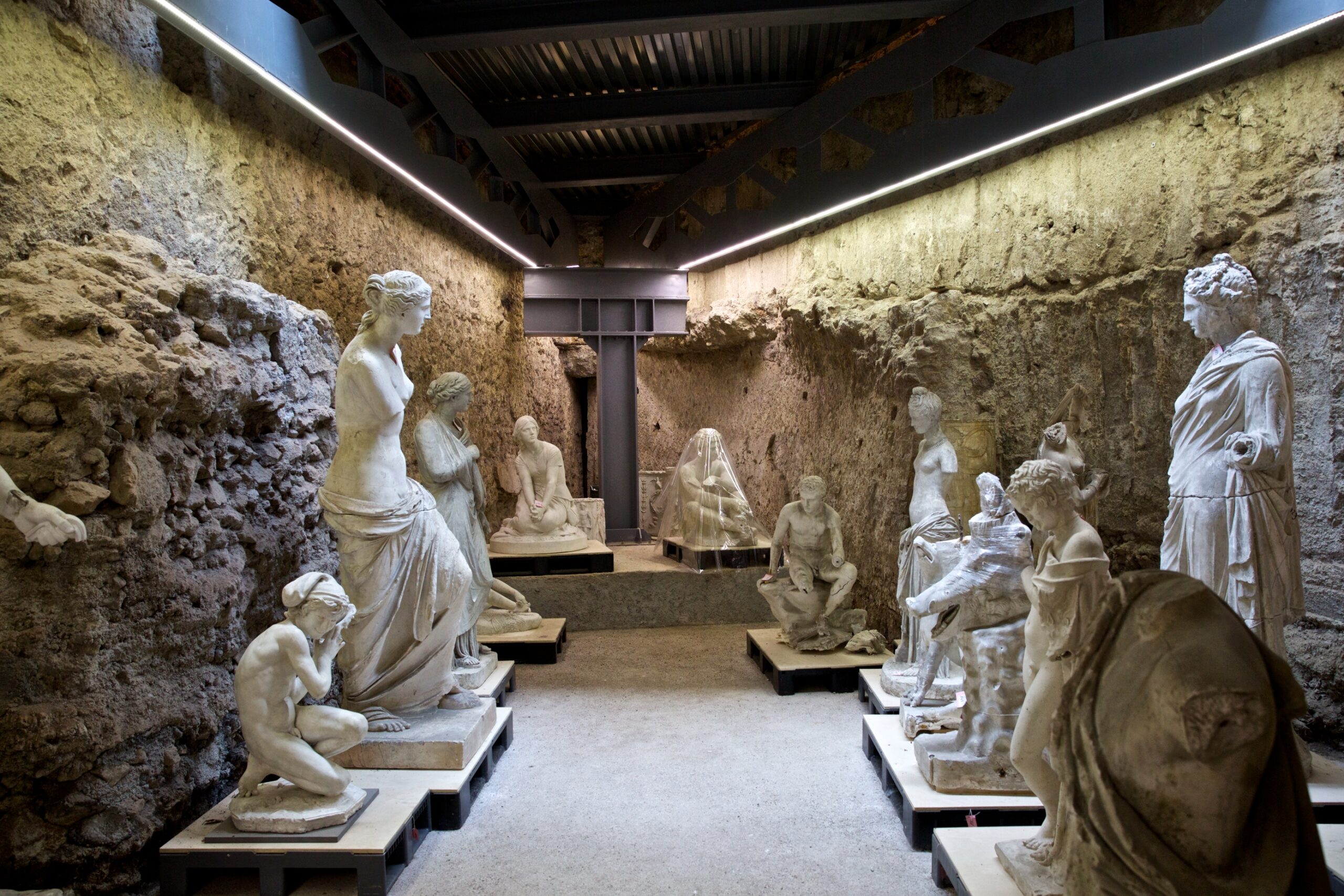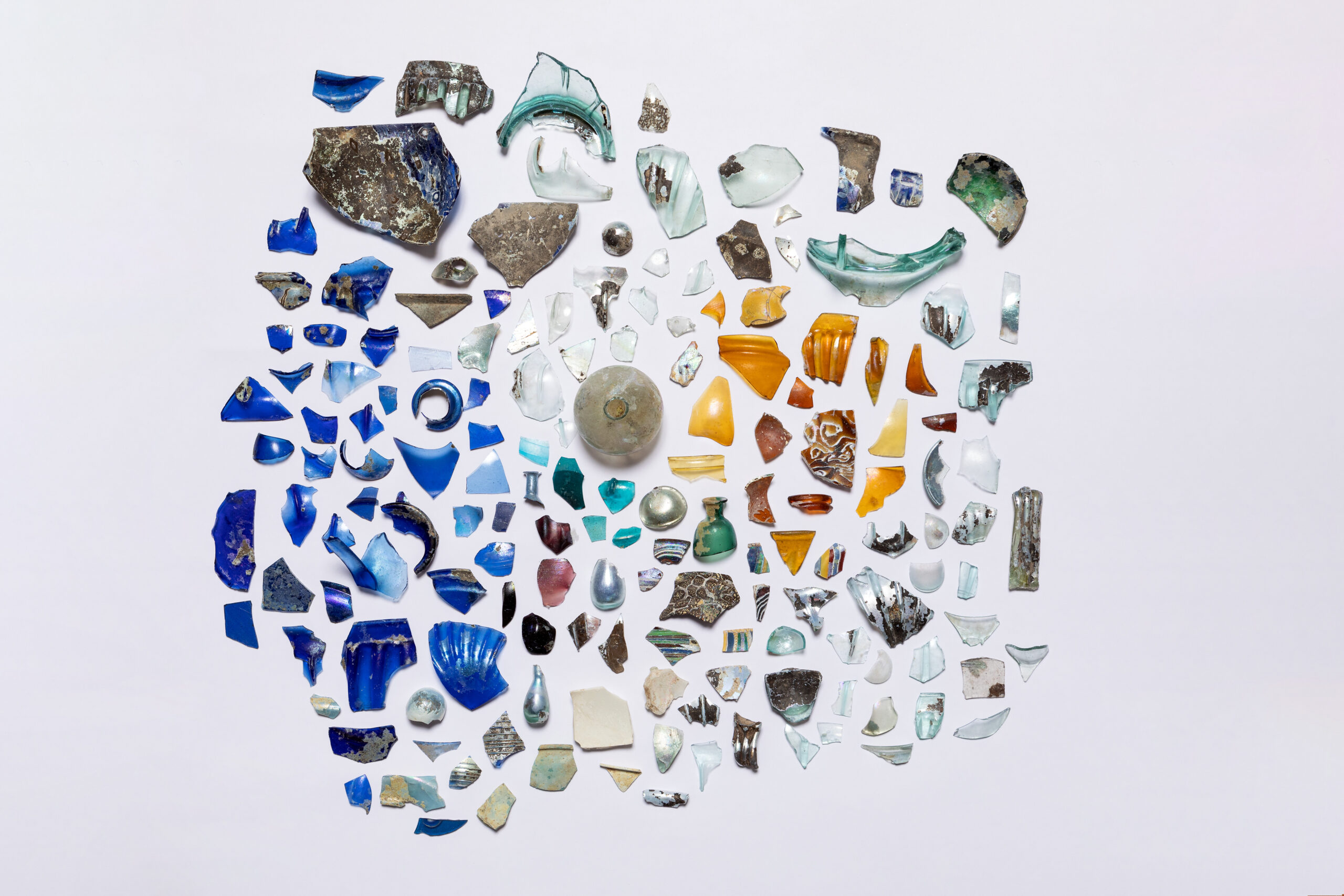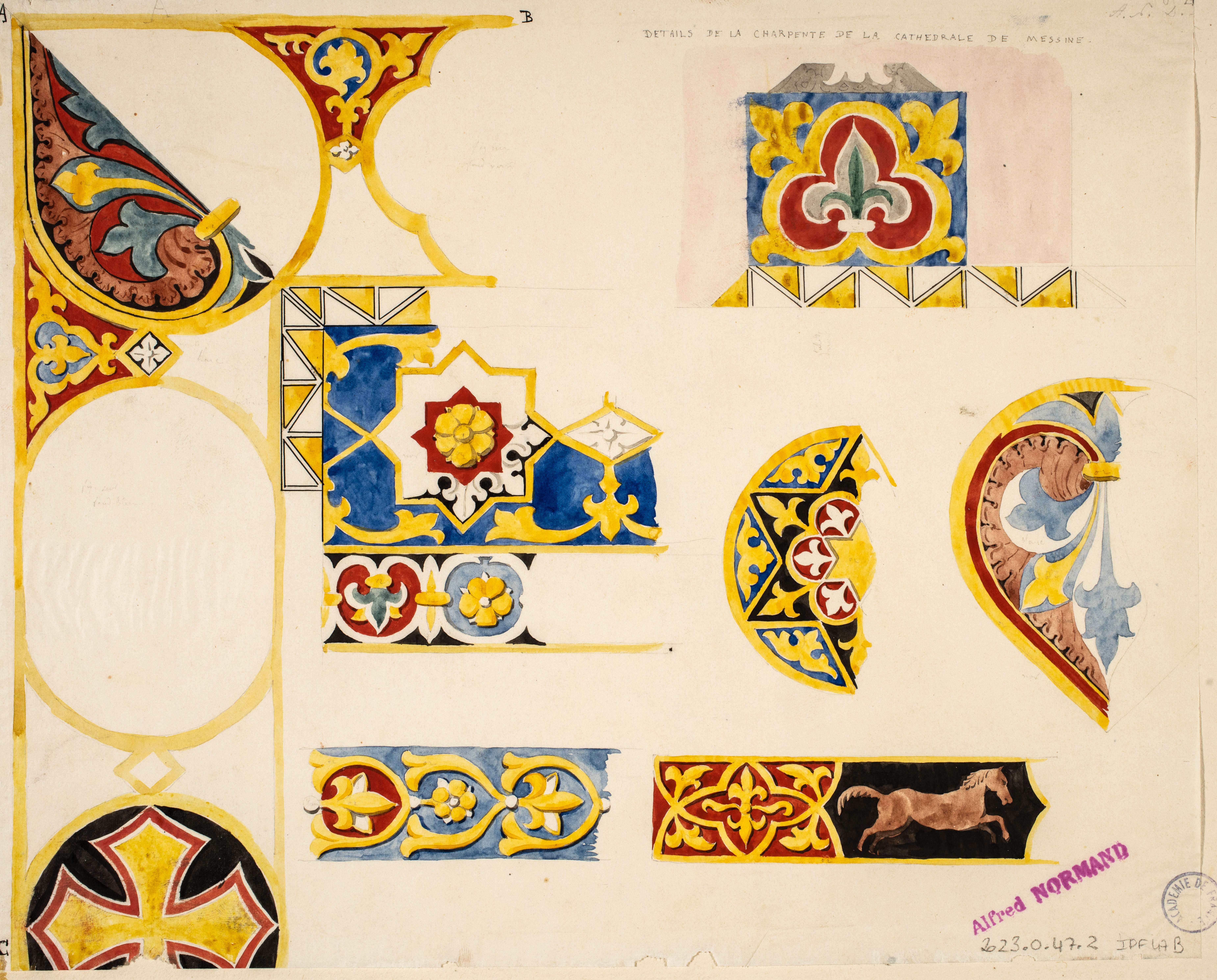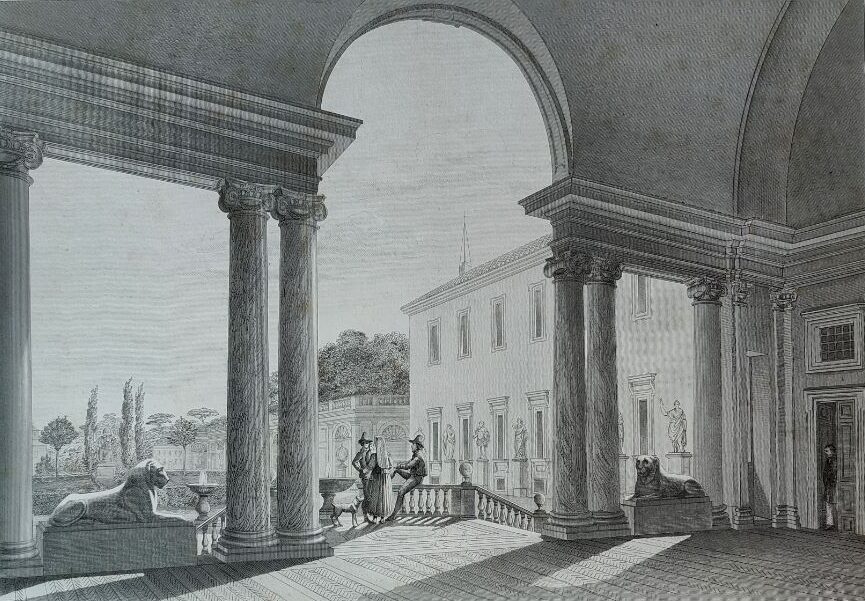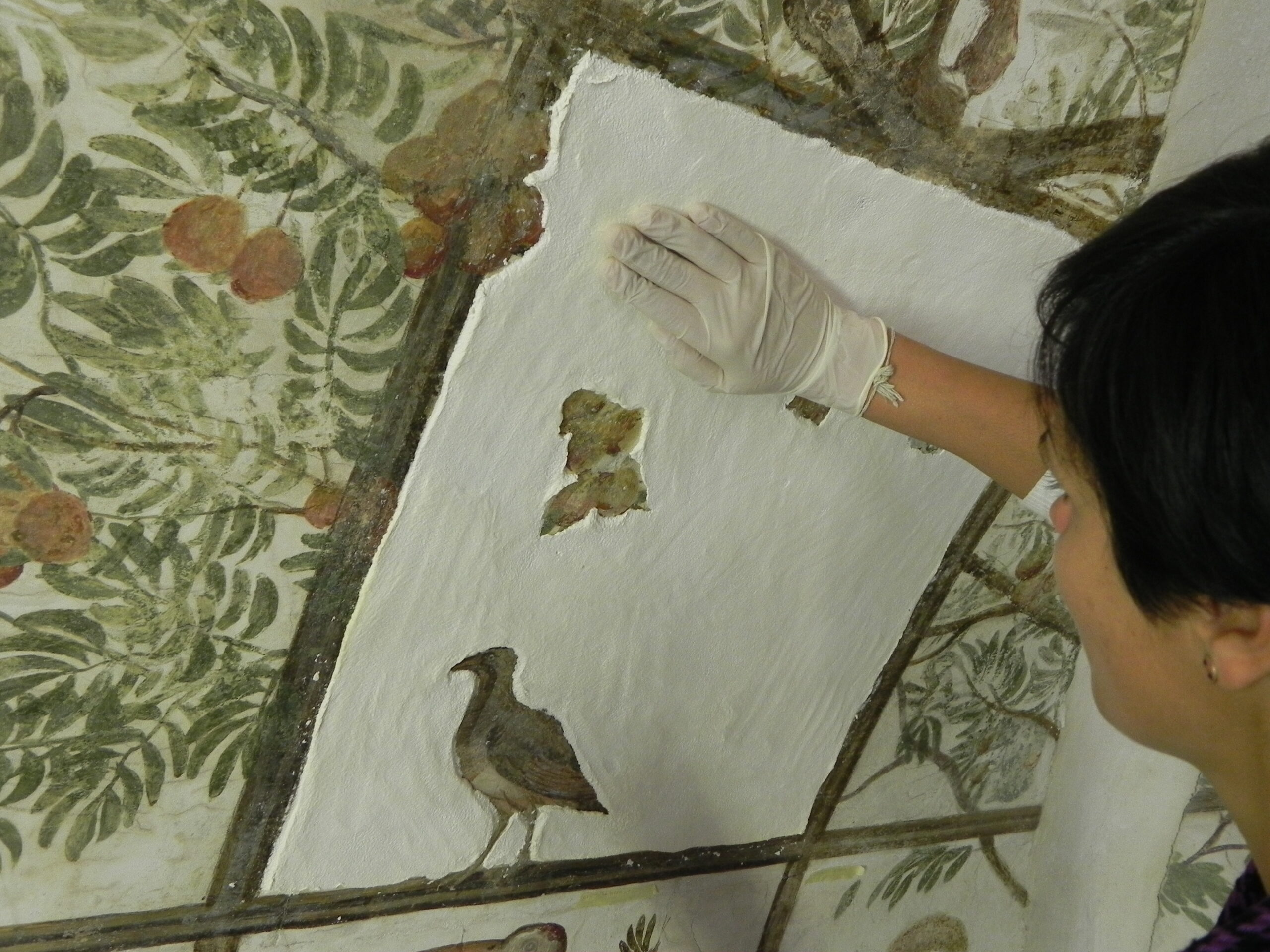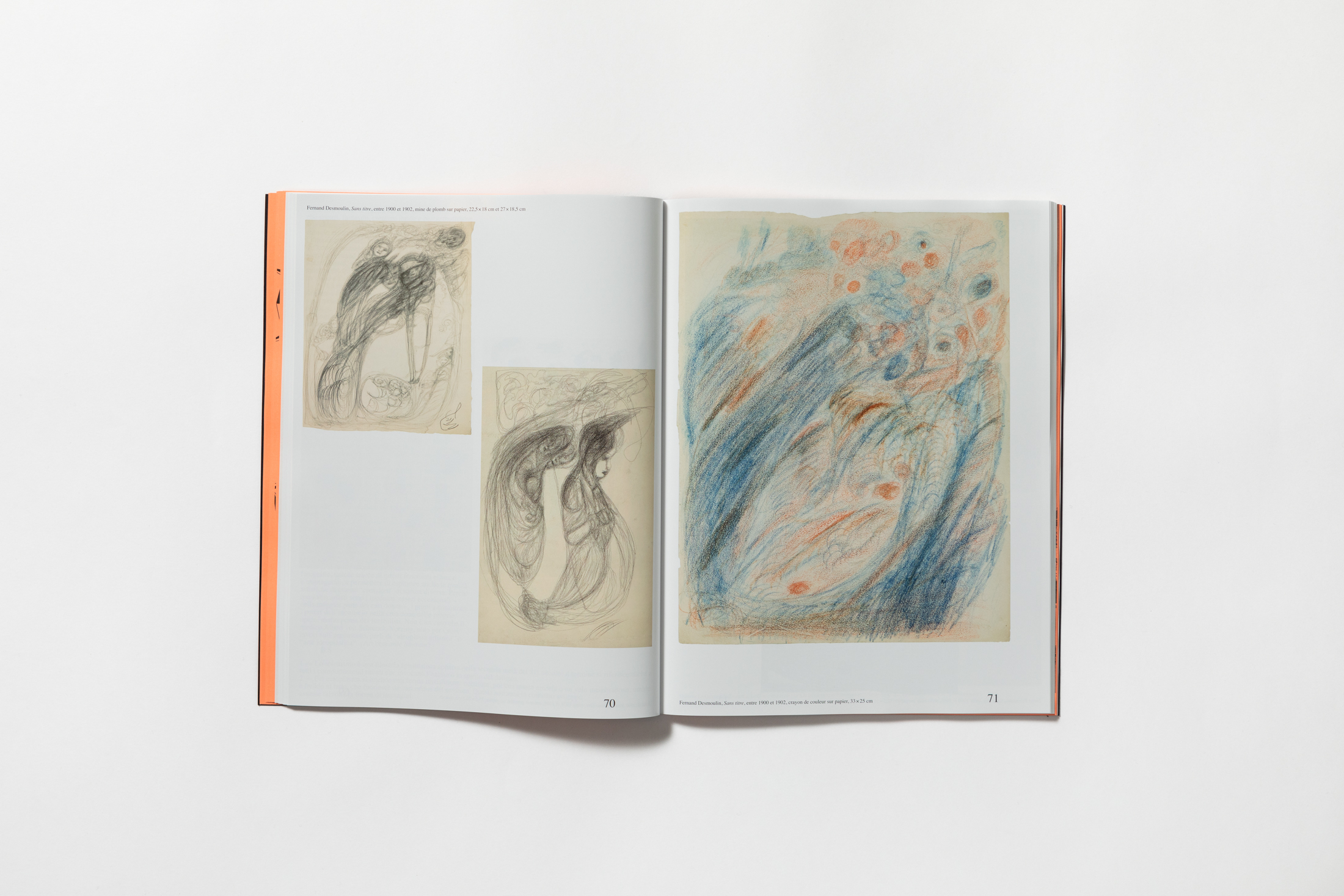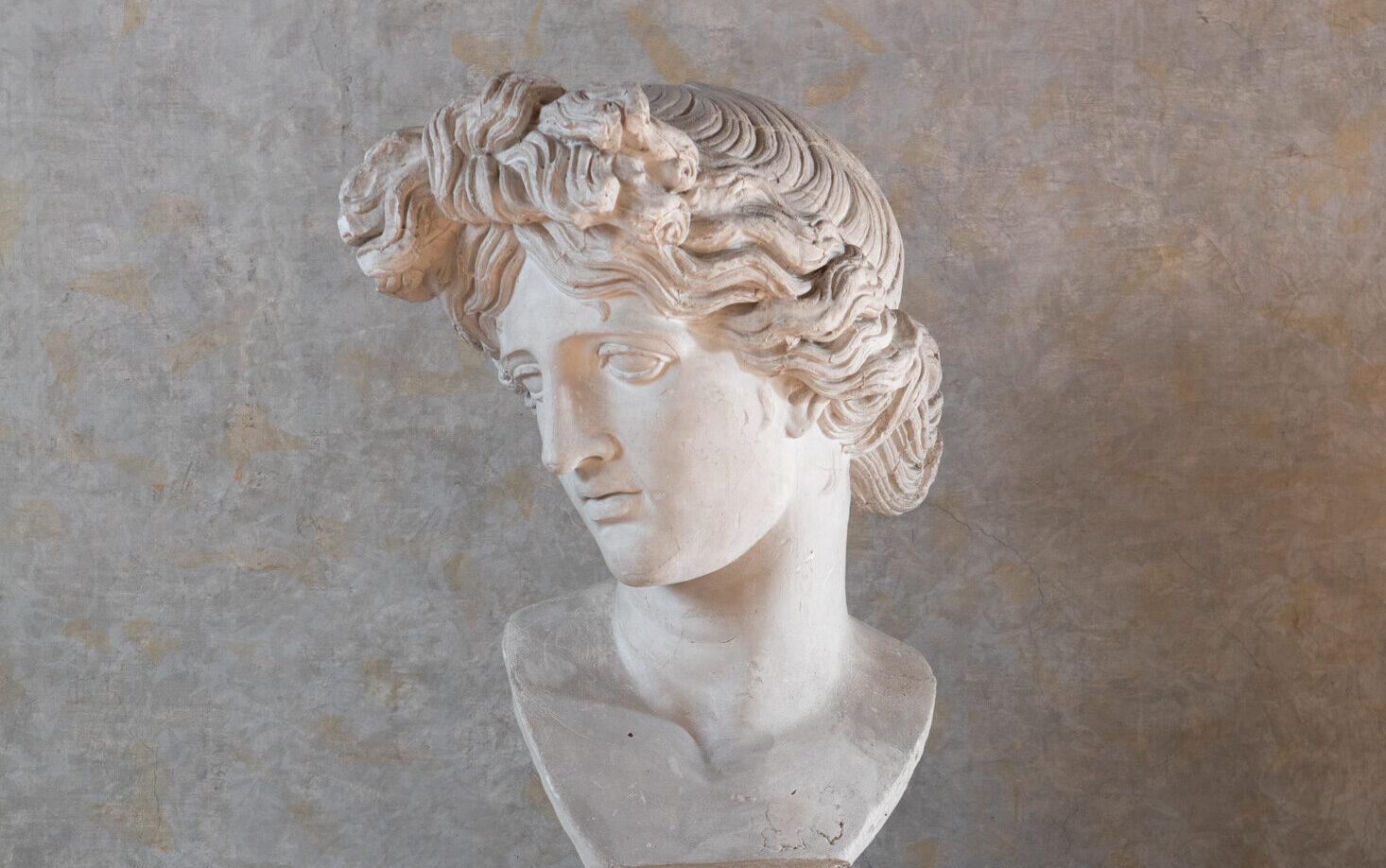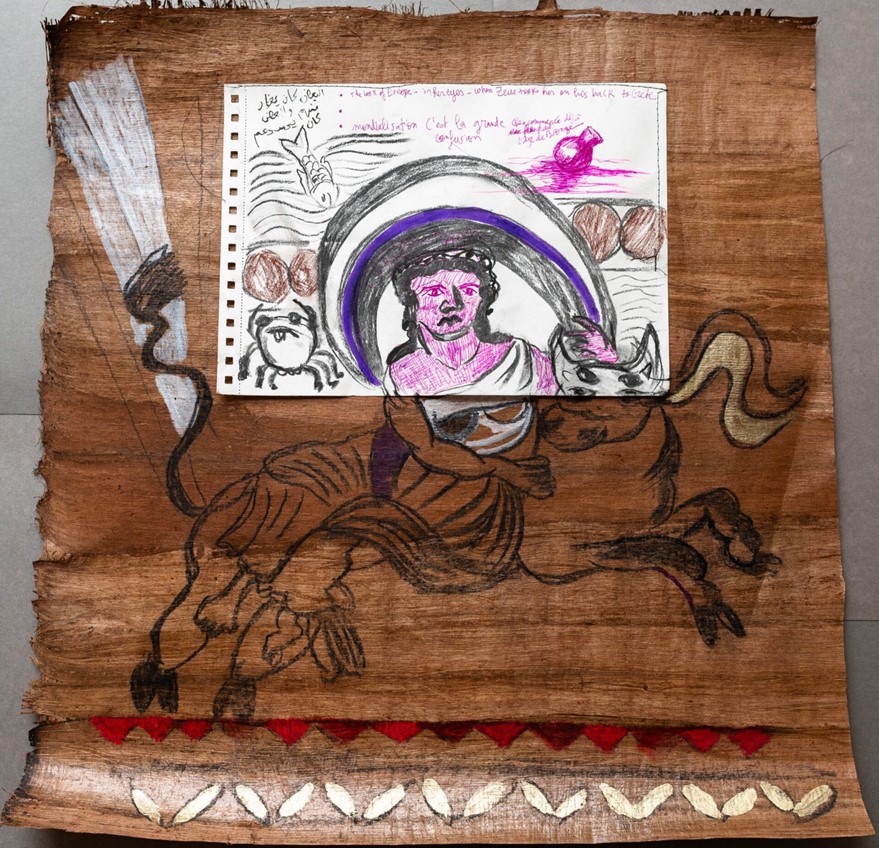Search
Research

This way
→
Founded in 1970 on the initiative of André Chastel (1912-1990), the Department of Art History focusses on the conservation, study and promotion of the collections of the French Academy in Rome, as well as the ancient archives and heritage holdings of its library. It promotes research in all areas of art history and organizes symposia, meetings and study days.
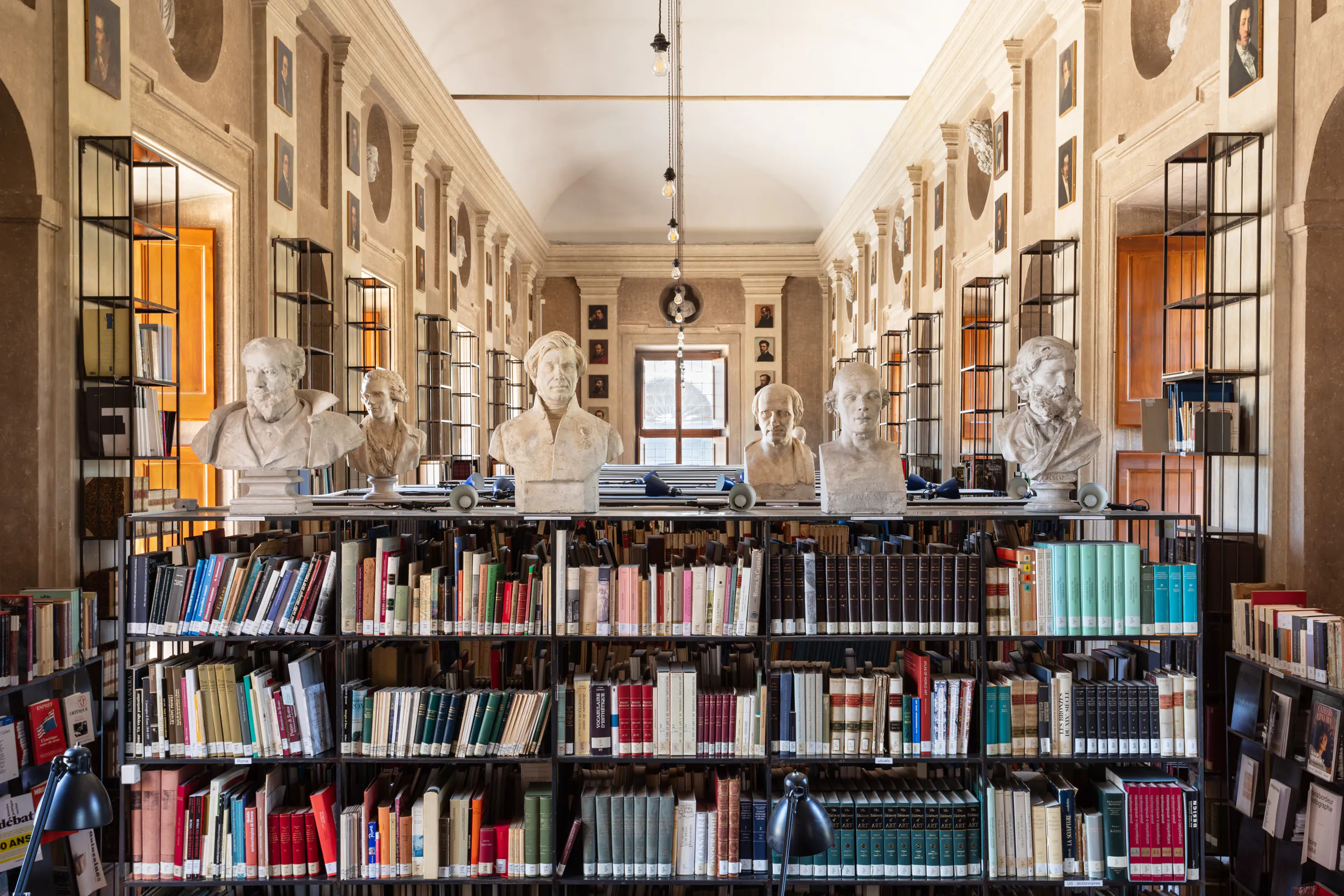
The collections
The French Academy in Rome preserves a collection of nearly 5,000 works. Some of these are exhibited in Villa Medici and its gardens and are regularly studied and restored. The collection of the French Academy in Rome features numerous pieces of historic furniture, contemporary art and design objects, and a substantial collection of plaster casts, with pieces dating back to the time of Louis XIV. Works also include 17th- and 18th-century tapestries, ancient bas-reliefs, and medals. The painting section has about 500 works, including 463 portraits of fellows made between 1798 and 1936. The Academy also has a wide-ranging collection of historical musical instruments, an important collection of graphic art consisting of engravings, drawings and watercolors, and a photo library with about 16,000 photographs, including prints, works in ektachrome and negatives. The Academy is also a repository for works from French collections, particularly from the Mobilier national.
The works in the collections are the subject of regular study and restoration campaigns, ranging from annual dusting to more specific operations. Certified restorers, specialists in the different media, are responsible for carrying out the restorations, which are overseen by the art history department. Recent campaigns have included the dusting and repackaging of archaeological material preserved in the underground vaults of Villa Medici, as well as ongoing work on the graphic art collection, particularly the architectural plans of Villa Medici and its gardens, and the collection of the architect Alfred-Nicolas Normand (1822-1909). Every year, portraits of fellows are also restored, as well as ancient and modern herms that were once installed in the gardens.
Villa Medici regularly enriches its art collection with acquisitions. The following have recently been added to the collections and are now on public display: La Trinité des Monts, vue du Pincio by the French painter Maurice Denis (inv. 2024.1.1), Galilée by François-Marius Granet (inv. 2023.2.1), and La chambre turque à la Villa Médicis by Alfred de Curzon (inv. 2022.1.1).
Find out more on the collections of Villa Medici
Explore the collections database: Base d’Antin
The digital resources
Villa Medici provides the public and researchers with six digital platforms to explore the premises, collections and history of the French Academy in Rome.
Base d’Antin: It is the database for the collection of the French Academy in Rome – Villa Medici. Users can browse by keyword or by filtering by type of work or group.
Archives of Villa Medici: It brings toether more than 6,000 documents relating to the correspondence of the directors, financial management of the institution, monitoring of buildings and gardens, cultural events and descriptions of the work of fellows.
Biographical dictionary of the fellows of the French Academy in Rome: It lists the fellows from 1666 to 1968, when the Prix de Rome competition was abolished. The individual records of the fellows provide biographical and professional information such as places of birth and death, studies, Repertory of Expeditions from Rome, occupations, awards and honours.
Répertoire des envois de Rome en peinture et sculpture: It lists tje “Envois de Rome, e.e. works produced by paintors and sculptors fellows between 1804 and 1914 and sent to France each year.
Issues of Studiolo journal freely available on Persée: Several issues of Studiolo, Villa Medici art history journal, are available for free and for download on Persée portal.
Album of Villa Medici: It brings together, in the form of a shared platform, several tousand of amateur photographs that bear witness to the lives of the inhabitants, residents, guests and teams of Villa Medici from 1850 to the present day.
Further reading:
General bibliography on the Villa Medici and the French Academy in Rome (Fr)
The archives
Villa Medici preserves some of the documents produced by the French Academy in Rome as part of its activities. Most of the archives produced by the Academy before it moved to Villa Medici in 1803 were destroyed when Palazzo Mancini was sacked in 1793. Today the salvaged documents are kept at the Archives nationales in Pierrefitte-sur-Seine (France).
The archives include the correspondence of the directors, the financial management of the institution, monitoring of the buildings and gardens, exhibitions and cultural events, as well as descriptions of the work of fellows. There are various types of holdings: manuscripts, photographs, plans and digital data.
Consult the Frequently Asked Questions (Conducting research section) if you have any questions.
How to consult the archives
On-line consultation:
The Academy’s archives are housed at the Archives nationales (Pierrefitte-sur-Seine, France) and can be consulted at the following address: link.
On-site consultation:
Archives that have not yet been deposited with the Archives nationales can be consulted at Villa Medici by appointment. Consultations take place on Wednesday and Thursday mornings, from 9am to 1pm.
To make an appointment, please contact
Patrizia Celli: [email protected]
Procedure
When making your request, please indicate the subject of your research, the files you wish to consult and the date on which you wish to come to Villa Medici to consult the documents. Your appointment will be confirmed by email. On site, you will be asked to fill in a form and present some form of identification with a photo.
Consultation is limited to 5 archive boxes per reader per morning. It is necessary to have requested in advance the archive boxes to be consulted when making the appointment.
Any reader who fails to honor a reserved time slot more than twice without a valid reason may be temporarily or permanently refused access to new time slots.
The library
Located in the former Galerie des Antiques of Ferdinando de’ Medici, the library of the French Academy in Rome was created in 1803 by Joseph-Benoît Suvée, director from 1795 to 1807. It contains over 38,000 volumes and 40 periodicals on subscription, reflecting the history and current status of the disciplines represented at Villa Medici. The books cover the visual arts, architecture, art history, music (with many contemporary scores), photography, film, literature and comics.
The library has an antique collection of around 1800 works (including 800 pre-1800) and a collection of old and modern musical scores of around 2400 works. One of the library’s missions is to provide the most accurate possible overview of current artistic events by acquiring catalogs of major exhibitions in France and abroad, as well as the most important artists’ monographs, with special emphasis on connections between France and Italy since the Renaissance.
Explore the library book catalogues online
Catalogue Farnese
Catalogue SUDOC
Catalogue URBiS
If you have any questions, please consult the Frequently Asked Questions (Conducting research section)
The Fonds of antique books
The collection of antique books consists mainly of 18th-century editions, but also includes seven 16th-century books and thirty-two 17th-century editions. These include works on Félibien, Pietro Santi Bartoli, Les Gravures du Cabinet du Roi and Bernard de Montfaucon’s L’Antiquité expliquée. An almost complete collection of Piranesi’s engravings and several accounts of travels in Italy (Lalande, Labat, l’Abbé de Saint-Non) make up the other most valuable works in the early collection. Finally, the history of art is represented by rare editions of various theoretical treatises (Dürer, Félibien, Roger de Piles, Mengs, Winckelmann). As for architecture, in addition to classical treatises, there are numerous volumes describing Rome: Desgodez, Guattani, Falda, Percier et Fontaine, Bartoli, Lagardette.
In the 19th century section, in addition to art history (La Vie des peintres by Landon), the collection focuses on two main fields: architecture, with major works by Quatremère de Quincy, Viollet-Le-Duc, Canina and Valadier, and music. The early music collection – catalogued with the help of the Palazzetto Bru Zane – consists mainly of opera scores, covering a period from Lully’s earliest printed works to works by Bizet and Saint-Saëns, and including the most prominent protagonists of 18th and 19th-century French theater. Operas by Italian musicians who lived in France during the second half of the 18th century, such as Piccinni, Sacchini and Paisiello, are particularly well represented, as are French scores from the early 19th century. The catalog of pre-1900 scores, compiled by Paolo Russo and Irene Maffei, was published by the Florentine publisher L.S. Olschki, and can now be consulted online.
The library’s “treasures” also include the “Collection Muro Torto”, where Christian Prigent, fellow and writer in 1979-1980, printed collections of poems and short stories on a small manual press. In addition to a number of manuscripts, the library also holds the travel drawings donated to Villa Medici by the heirs of the architect Alfred-Nicolas Normand, and a number of works from the Nadia Boulanger Bequest.
How to access the library
The library is primarily available to Villa Medici fellows and residents for their research and work. Secondly, it is accessible to any researcher, teacher, curator or student who can show that they are doing scientific research on a subject that is compatible with the library’s collection.
Access conditions
Access to the library is by appointment only and subject to availability.
External readers can schedule an appointment by contacting:Raffaella Carchesio, librarian at the French Academy in Rome – Villa Medici
[email protected] / +39 06 67 61 263Books available
Villa Medici books are listed in the following online catalogues:
The Villa Medici librarian can help with title searches on site.
Seminars, study days and research projects
The Art History Department promotes research that is open to the most current aspects of the discipline, both in terms of its methods and its subjects.
In partnership with institutions in France, Italy and abroad, it organises and hosts seminars and study days, and participates in and supports research projects devoted to the history of art from the Renaissance to the present day, favouring an interdisciplinary and international approach.
Since 2022, the Department of Art History is leading the five-year Carracci ConservArt project (2022-2026), in partnership with the Soprintendenza Speciale Archeologia Belle Arti Paesaggio di Roma, the École Pratique des Hautes Études, the École française de Rome, the Fondazione Centro conservazione e restauro La Venaria Reale, the French Embassy in Italy and the Istituto centrale per il restauro. This research project is dedicated to the study of the Carracci Gallery in the Palazzo Farnese through its critical fortune, its conservation and its restorations. It follows on from the last major restoration campaign of the gallery, carried out between 2013 and 2015, and will result in the publication of two works dedicated to the restoration and rediscovery of the graffiti in the gallery.
Scientific publications
Villa Medici publishing program is punctuated by the annual release of art history publications such as Studiolo magazine and the Actes collection.
Founded in 2002, Studiolo is an international peer-reviewed journal, rated A by the Agence nationale d’évaluation du système universitaire et de recherche (ANVUR). Each issue is structured around a thematic Dossier and four sections: Varia, open to off-theme proposals; Débat, devoted to historiography; Villa Medici, history and heritage, focusing on the history of the French Academy in Rome and of Villa Medici and Champs libre, a space welcoming proposals from the current year’s fellows.
The Actes collection is dedicated to the publication of collaborative projects resulting from colloquia and research carried out by the department of art history, focusing on artistic production and the circulation of images between Italy, France and Europe, from the Renaissance to the present day. Other publications contribute to research and knowledge of the place and institution, such as the Correspondances des directeurs series published in partnership with the Société des historiens de l’art français, or more recently the work Pierres, matières et surfaces at Villa Medici (2024).
Studiolo, Villa Medici art history journal
Recognized as Class A by ANVUR (Italian National Agency for the Evaluation of Universities and Research Institutes), Studiolo is a multilingual, international scientific journal, open to the most up-to-date research in all fields of art history. Each issue features a call for contributions on a thematic Dossier, and four sections that include off-theme proposals (Varia, Debates), documentary studies (Villa Medici, History and Heritage), and contributions from the current year’s fellows (Champ libre). An international scientific committee, periodically renewed, ensures the editorial line and selection of articles. Since 2021, the magazine has been published by Éditions Macula.
The Art History Collection
The Art History Collection of the French Academy in Rome focusses on publishing collective works resulting from colloquia, seminars, study days and research workshops organized by the art history department, often in collaboration with international institutions and universities. The choice of themes linked to current cultural events in Europe, and the selection of articles that encourage debate, give this collection a resolutely contemporary and international perspective.
The art history residencies
Villa Medici hosts art historians and theorists, curators and restorers for one-year residencies (the fellows). Other programs make shorter stays possible, in particular, the Medici Residency André Chastel with the École française de Rome (8 PhD students per year), the Medici Residency Daniel Arasse with the Institut national d’histoire de l’art (2 researchers per year), and the Medici Residency with the Kunsthistorisches Institut in Florence.
Find out more about our residency programs and current residents and fellows
